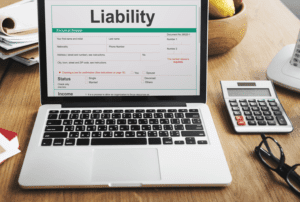Days Sales Outstanding DSO Formula + Calculator

Similarly, companies offering extended payment terms (e.g., net 60 or net 90) might see a higher DSO compared to businesses that require payment within 30 days. In June, the vineyard dso meaning drew in $35,000 in ticket sales to its wrestling matches (a cash-only business). The company also sold $83,000 of wine—all of which was purchased on credit by distributors.
Benefits of Accounts Receivable Automation
Days sales outstanding is also sometimes referred to as “days sales in receivable”. By keeping a close eye on DSO, businesses can identify important trends, pinpoint issues in their credit policies or collection processes, and take corrective actions. For example, if your DSO is rising, it might signal that customers are taking longer to pay due to dissatisfaction with the product or service, financial difficulties, or too lenient credit terms. Addressing these issues promptly will help your businesses avoid cash flow crunches, ensuring you have the funds you need to thrive and grow. Days Sales Outstanding (DSO) is a crucial financial metric for accounts receivable that tells us how long, on average, it takes a company to collect payments from its sales on credit.
Financial reporting
Some will say that DSO and ACP are interchangeable metrics while others note subtle differences in their calculations. The more proactive you are in measuring days to collect, the easier it will be to spot cash flow problems early and address them before they start to impact your operational efficiency. To understand the effectiveness of your accounts receivables process, analyze individual DSO values, and review trends in DSOs over time.
Days Sales Outstanding Template
As a general rule of thumb, companies strive to minimize days sales outstanding (DSO), since it implies the current payment collection method is efficient. However, for a small-scale business, a high DSO is a concerning matter because it may cause cash flow problems. Smaller businesses https://www.bookstime.com/ typically rely on the quick collection of receivables to make payments for operational expenses, such as salaries, utilities, and other inherent expenses. They may struggle for cash to pay these expenses from time to time if the DSO continues to be at a high value.

Limitations of DSO calculation
- A closer relationship means more loyalty, repeat business, and better feedback on your product or services.
- In particular, it can tell us how effective the company is managing its working capital.
- If a company’s DSO is increasing, it’s a warning sign that something is wrong.
- Similarly, if your customer pool tends to work on larger projects with longer payment timelines, you might experience a DSO above 45 days but be well below the industry average.
- While this metric seems simple on the surface, you’ll want to customize the calculation to get more granular views for your business.
- Average DSO for companies across various industries in the third quarter of 2022.
Use an invoice template that includes all of these important details, like the invoices generated by QuickBooks’ free invoice generator, or free invoice templates. Analyze DSO over multiple periods (e.g., monthly or quarterly) to identify trends. Look for patterns or anomalies that may indicate issues or improvements in your receivables process. Cash sales have a DSO of zero, and you shouldn’t factor them into DSO calculations, as they will skew the metric. While DSO provides valuable insight into how quickly your business collects payments, it’s important to remember that it’s just one piece of the puzzle when evaluating your overall financial health.
Collection Effectiveness Index (CEI)
For newer businesses, or businesses that have limited cash flow, not tracking your DSO can have serious repercussions, including bankruptcy. In understanding Days Sales Outstanding (DSO), it’s crucial to recognize that there’s no one-size-fits-all number signifying excellent or poor accounts receivable management. This metric varies significantly across industries, influenced by distinct business models and payment practices. Broadly speaking, a DSO ratio of 45 days or fewer is often seen as ‘good’ for most companies. However, what constitutes a high or low DSO can differ markedly depending on the specific industry and company type.
- Monitoring DSO enables businesses to identify and address problem payers in the customer base and serves as a reminder to stay on top of unpaid invoices.
- On the flip side, Days Payable Outstanding (DPO) is the average time a company holds onto its cash before settling its own outstanding bills to vendors.
- The time it typically takes to collect payment from your customers after you’ve delivered a product or services.
- Fast credit collection means the money can be sooner used for other operations.
- You can delve deeper into these formulas in our DSO Calculation Blog, where we explore various methods for calculating Days Sales Outstanding, including real-world examples.
If they were factored into the calculation, they would decrease the DSO, and companies with a high proportion of cash sales would have lower DSOs than those with a high proportion of credit sales. Given the vital importance of cash flow in running a business, it is in a company’s best interest to collect its outstanding accounts receivables as quickly as possible. Companies can expect, with relative certainty, that they will be paid their outstanding receivables.
How to Calculate Days Sales Outstanding (DSO)
Regardless of the method, you’re using here, it will help you get an idea of where you stand. In our State of B2B Payments in 2024 report, the overall median DSO across industries is 56 days, but a closer look reveals significant variation, with some industries getting paid faster than others. At Upflow for example, we automatically calculate your DSO using the countback method when connecting your account with your invoicing solution. You can then track your DSO from your private dashboard without having to think about calculating it yourself. This metric allows you to track how much of your outstanding receivables are collected after their set due date, making it a telling indicator for forecasting the likelihood of bad debt.
How to Calculate Days Sales Outstanding and Why It Matters

: Bookkeeping | Tags:
Vous pouvez suivre les prochains commentaires à cet article grâce au flux RSS 2.0

 Service commercial : 01 80 88 43 02
Service commercial : 01 80 88 43 02
Répondre
Désolé vous devez être connecté pour publier un commentaire.